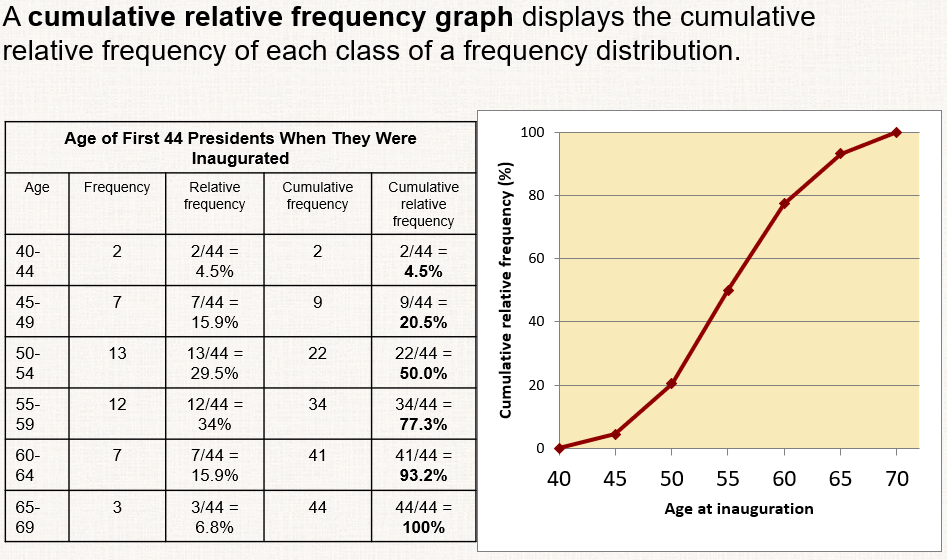Unit 2 - Modeling Distributions of Data
1/12
There's no tags or description
Looks like no tags are added yet.
Name | Mastery | Learn | Test | Matching | Spaced |
|---|
No study sessions yet.
13 Terms
pth percentile
percentage of observations at or below a given observation
^include values below or = to the chosen value, but do not include the chosen value itself! (ex: value is 22, if there are two 22s only include one of them)
cumulative relative frequency graph
displays the cumulative relative frequency of each class of a frequency distribution
^think of y-axis as percentile
^go to next class → cumulates, add up percentage for that class and the ones below it

z-score
how many standard deviations from the mean an observation is
^ z = (observation - mean)/standard deviation
*aka standardized score
^higher - more above avg
*allows comparison of different data sets (ex: SAT vs. ACT scores, who did better on their respective test)
*higher z-score means more above the mean/did ‘more’ better than others, but does not mean higher # of smth (b/c z-score says nothing abt sample size!)
adding/subtracting to transform data
add ‘a’ to/subtract ‘a’ from measures of center & location (mean, median, quartiles, percentiles)
shape/spread do not change (the rest change)
multiplying/dividing to transform data
multiply/divide measures of center & location (mean, median, quartiles, percentiles) by ‘b’
mult/divide measures of spread by |b|
shape does not change (unless b is negative) (the rest change)
!!! more unusual if percentile is farther from median (50th percentile)
Q1 25th percentile, Q3 75th percentile
write units
cumulative rel freq graph, what will be the shape of histogram -> look at where the median is, if it is more left prob right-skewed, if more right it is prob left-skewed
make histogram from cumulative rel freq graph:
x-axis same, make the gaps the bins
y-axis is percent, make bars as tall as the change in cumulative rel freq from the graph (if looking at btwn 10-20 and 10 is 8 and 20 is 30, then the change is 22, so that is the height of the bar on the histogram!!)
density curve
a curve that is always on or above the horizontal axis and has a total area of 1 below the curve
^mean μ = at ‘balance point’
^standard deviation σ
^median = point where ½ data is above and ½ is below
*describes overall pattern of a distribution; ideal description of a distribution of data
*excludes outliers; not perfect
normal curve
describes a normal distribution
always same shape (symmetric, unimodal/1 peak, bell-shaped)
completely described by its mean/standard deviation
mean and median in the center of the normal curve
normal distribution
described by a normal density curve
notation: N(μ, σ)
standard deviation is the distance from the mean to the change-of-curvature points on either side
68-95-99.7 Rule
68% of observations fall within 1 standard deviation (σ)
95% of observations fall within 2 σs
99.7% of observations fall within 3 σs (0.3% left, 0.15% on both sides)
standard normal distribution
the normal distribution has a mean of 0 and standard deviation of 1 (same units!)
standard normal table A
table of areas under the standard normal curve
^only used for z-scores
^rows are ones and tenths place, columns are hundredths
^using it helps you find the proportion of observations BELOW the given # (like z < [given])
If you want to find above (z > [given]), do 1 minus the # you get
if a < z < b, find the difference (do the value you get for b (what's on the table) minus the value you get for a, no doing any '1 - [value you get]')
working backwards - given percentile -> convert to decimal (if '#% of all observations are GREATER than z,' do 1 - [the decimal]), find on table, look at what z it is!
!!!
normal curve → mean = median
if a curve is skewed, the mean is pulled towards the tail of the data
peak of the curve is the mode